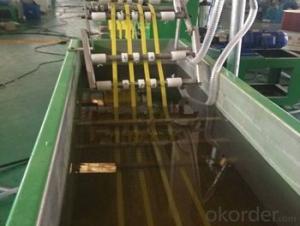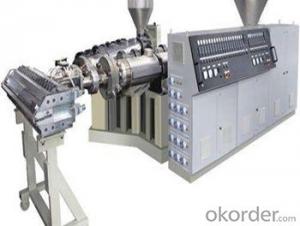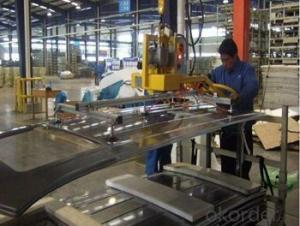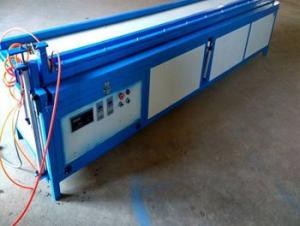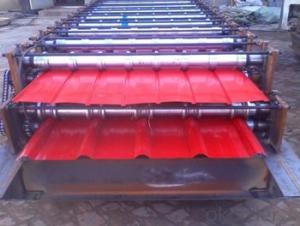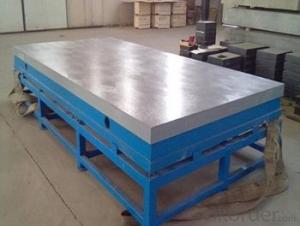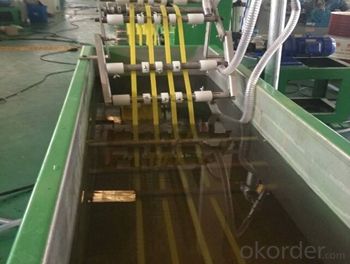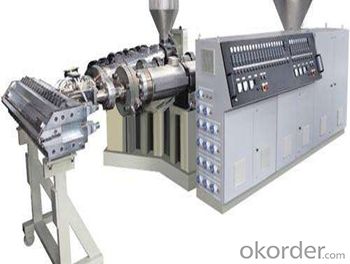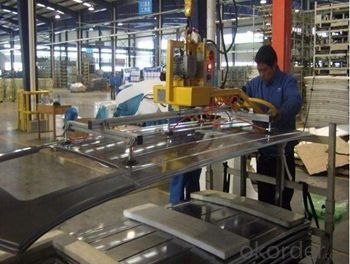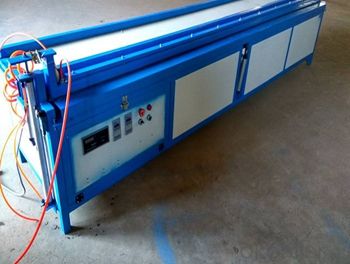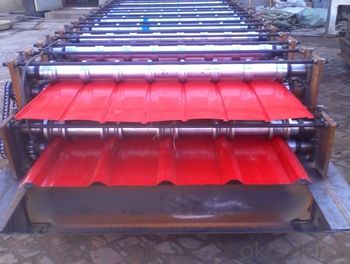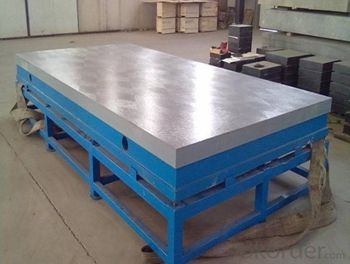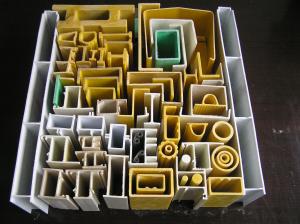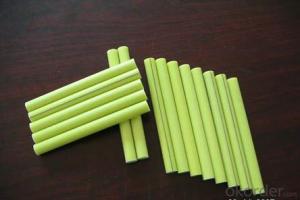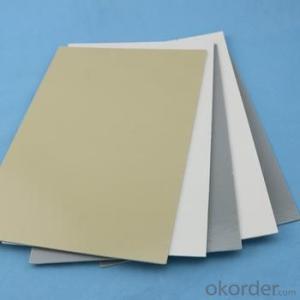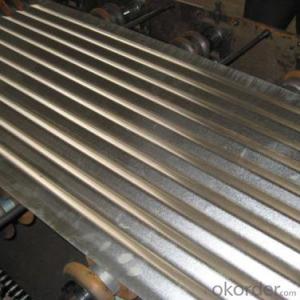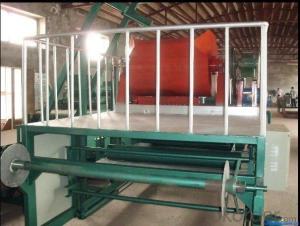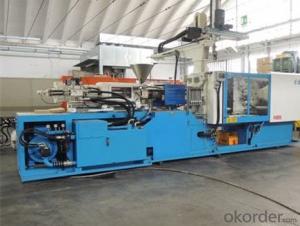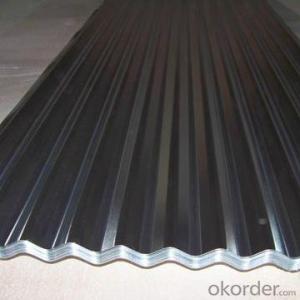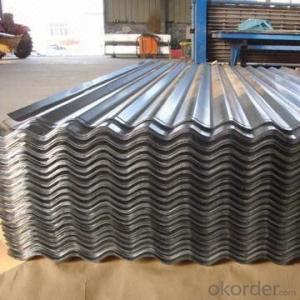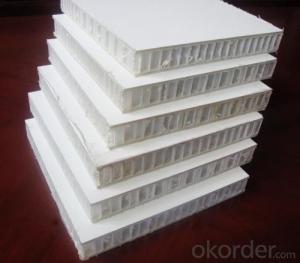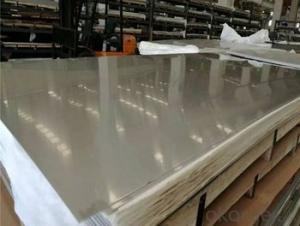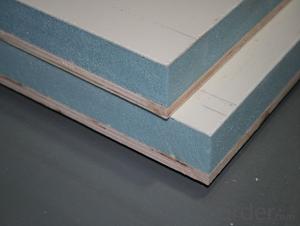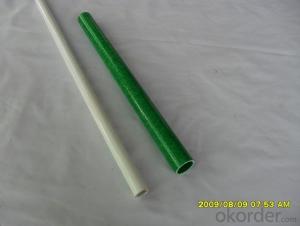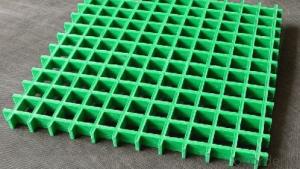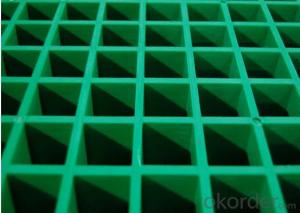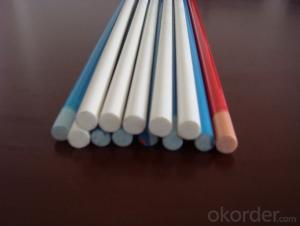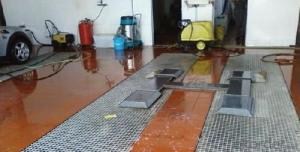FRP Pultrusion Profiles - Anti-Fatigue, High-Quality, Harmless Pultruded Grating in Various Styles
- Loading Port:
- Tianjin
- Payment Terms:
- TT OR LC
- Min Order Qty:
- 3 m.t.
- Supply Capability:
- 100000 m.t./month
OKorder Service Pledge
OKorder Financial Service
You Might Also Like
PRODUCT DESCRIPTION
Pultruded grating is made by a particular assembly process, which using “I” shape as its main load-bearing and special rod to go through the bearing bar. Pultruded grating include the standard grating and the custom grating, the custom grating can be designed to meet customer’s requirement or special using condition by changing the shape, size and space of the bearing bars, the surface can be covered with lozenge panel, grit panel, or added the anti-slippery sand directly.
FRP pultruded grating has the most characteristics of molded grating, but it has its distinct advantages, it has very high fiberglass content in the loading direction, so it has very high load capability, it has more superiority when used at wide span, so that the basic support will be decreased and the project cost will be reduced accordingly.
SPECIFICATION
The standard space between two crossbars is 6 inch or 12 inch.
Thickness (mm) | Bar width (mm) | Open space (mm) | Open rate (%) | Approx weight (kg/m |
25.4 | 15.2 | 22.8 | 60 | 13.2 |
25.4 | 15.2 | 15.2 | 50 | 15.9 |
25.4 | 15.2 | 10.1 | 40 | 18.5 |
25.4 | 40 | 10.8 | 21 | 14.5 |
38.1 | 15.2 | 22.8 | 60 | 15.8 |
38.1 | 15.2 | 15.2 | 50 | 19.1 |
38.1 | 15.2 | 10.1 | 40 | 22.4 |
50.8 | 25.4 | 25.4 | 50 | 16.6 |
50.8 | 25.4 | 12.7 | 33 | 21.1 |
CHOICE FOR PULTRUDED GRATING
Resin: GP resin, ISO resin, VE resin, Phenol resin
Color choice: Yellow, gray, green, custom color
Surface choice: Groove surface, grit surface, lozenge cover surface
FEATURES
a. Anti-corrosion and anti-rust
b. Light weight and high strength
c. Anti-flammable
d. Anti- fatigue
e. Safe and anti-slippery
f. Anti-ageing
g. Easy of maintenance
h. Excellent electromagnetism property
i. Good economic benefit
FIELDS SERVED
Sewage treatment,
water supply and drainage,
chemical industry,
oil industry,
power engineering,
pulp and paper.
APPLICATION
Operation terrace,
stair walkway,
ground floor,
trench cover,
sidewalk,
foot bridge.
COMPANT DESCRIPTION
CNBM,China National Building Materials Group is a state-owned enterprise in charge of administrative affairs in china building materials industry. Established in 1984, CNBM is a large group corporation of building materials with total assets of 25 billion RMB and a total staff of 30,000.CNBM now owns 200 subordinating firms of solely owned and joint-venture companies.
CNBM International Corporation is one subsidiary of CNBM, we focus on offering good-quality products,professional service and complete solution to our customers. Strong delivery capacity, advanced technology& management, strong financing capability and excellent after-sale service are our advantages in sharing international market.
FAQ
Q1.What's your sample policy?
A:We can supply the sample if we have ready parts in stock, but the customers have to pay the courier cost.
Q2.Can you produce according to the samples?
A: Yes, we can produce or modify the products according to your request.
Q3.How do you deliver the goods to my country?
A:We can provide international express, such as DHL, EMS, UPS, FedEx, etc. We select air freight and sea freight upon your requests. Quotations if without mentioning the shipping costs are shipping fee excluded.
Q4.How much does it cost to ship to my country?
A:When you goanna to place an order, please contact us, because different country has different freight.
Q5.How to get the catalogue?
A:please contact us and tell us what you are looking for.
We will try our best to meet customers' demands. Welcome you come here to visit us. We sincerely welcome partners around the world to establish business cooperation with us on the basis of mutual trust, benefit and development.
PICTURES
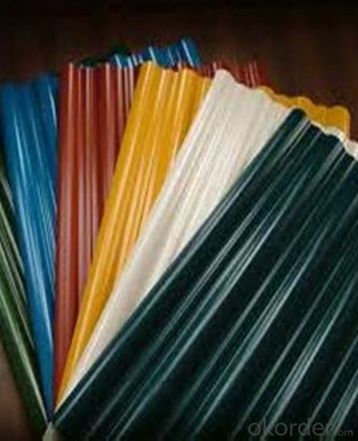
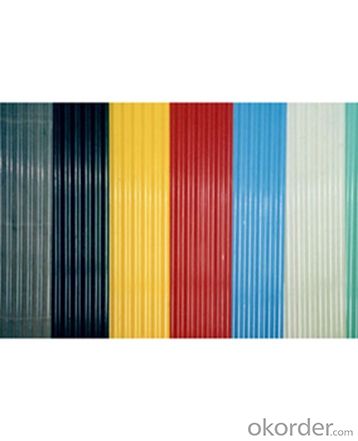
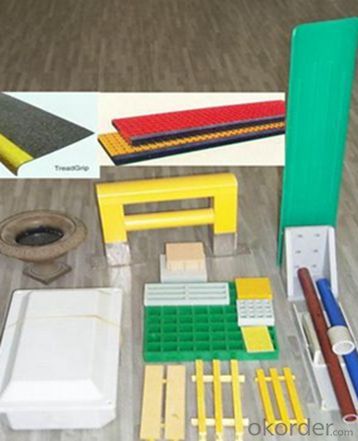
- Q: What does M23 grade of glass fiber reinforced plastic section mean?
- Glass fiber reinforced plastic profiles are mainly used in the field: general and environmental units of manhole covers, factories and mines units of insulated cable tray; chemical units of the transmission pipeline; insulation protection fence; including floor and so on. More fields. Advantage is obvious, if the corrosion resistance, insulation resistance, quality is lighter than steel; strength and steel strength comparable.
- Q: Are FRP pultrusion profiles resistant to fuels?
- Yes, FRP (Fiber Reinforced Polymer) pultrusion profiles are highly resistant to fuels. Due to their inherent corrosion resistance and non-reactive nature, FRP pultrusions can withstand exposure to a wide range of fuels, including gasoline, diesel, and aviation fuels, without deteriorating or losing their structural integrity. This makes them suitable for various applications in industries such as automotive, aerospace, and oil and gas, where resistance to fuel exposure is crucial.
- Q: Are FRP pultrusion profiles resistant to chemicals used in food packaging?
- Yes, FRP (Fiber Reinforced Polymer) pultrusion profiles are generally resistant to chemicals used in food packaging. FRP materials are known for their excellent resistance to a wide range of chemicals, including those commonly used in food packaging such as acids, bases, solvents, and oils. This chemical resistance makes FRP pultrusion profiles a suitable choice for applications involving contact with food packaging materials. However, it is important to note that the specific resistance of FRP profiles may vary depending on the formulation and type of resin used. Therefore, it is advisable to consult with the manufacturer or supplier to ensure that the chosen FRP pultrusion profiles are suitable for the specific chemicals used in the food packaging industry.
- Q: How do FRP pultrusion profiles handle cyclic torsion loads?
- FRP (Fiber Reinforced Polymer) pultrusion profiles are designed to handle cyclic torsion loads effectively. The unique properties of FRP materials make them highly resistant to fatigue, making them suitable for applications where cyclic torsion loads are expected. One key advantage of FRP pultrusion profiles is their high strength-to-weight ratio. Reinforced with fibers such as glass or carbon, these profiles offer excellent tensile strength and stiffness, enabling them to withstand repeated torsional forces without deformation or failure. Moreover, FRP pultrusion profiles exhibit superior resistance to corrosion and chemical degradation compared to traditional materials like steel. This resistance ensures that the profiles maintain their structural integrity even in harsh environments where cyclic torsion loads may be prevalent. The manufacturing process of pultrusion also contributes to the ability of FRP profiles to handle cyclic torsion loads. During pultrusion, continuous fibers are impregnated with a polymer resin and then pulled through a heated die, where they are cured and shaped into the desired profile. This process ensures a uniform distribution of fibers throughout the profile, resulting in enhanced strength and stiffness in all directions, including torsion. To further enhance the performance of FRP pultrusion profiles under cyclic torsion loads, engineers employ design techniques such as optimizing the fiber orientation and selecting appropriate resin systems. These measures help distribute the torsional forces evenly across the profile, minimizing stress concentrations and improving the fatigue resistance. In summary, FRP pultrusion profiles are specifically engineered to handle cyclic torsion loads. Their high strength-to-weight ratio, resistance to corrosion, and uniform fiber distribution make them an ideal choice for applications where cyclic torsion loads are a concern.
- Q: Can FRP pultrusion profiles be used in the construction of amusement park rides?
- Yes, FRP pultrusion profiles can be used in the construction of amusement park rides. FRP (Fiber Reinforced Polymer) pultrusion profiles offer high strength-to-weight ratio, corrosion resistance, and durability, making them suitable for various applications in amusement park rides. These profiles can be used for structural components, such as supports, frames, and beams, as well as for aesthetic elements like facades or decorative structures. Additionally, FRP pultrusion profiles can be customized to meet specific design requirements, making them a versatile choice for constructing amusement park rides.
- Q: Can FRP pultrusion profiles be used in the construction of swimming pool enclosures?
- Yes, FRP (Fiber Reinforced Polymer) pultrusion profiles can be used in the construction of swimming pool enclosures. FRP pultrusion profiles are known for their high strength-to-weight ratio, corrosion resistance, and durability, making them suitable for outdoor applications like swimming pool enclosures. They are lightweight, easy to install, and have excellent resistance to water, chemicals, and UV radiation, making them an ideal choice for constructing enclosures that can withstand the harsh pool environment. Additionally, FRP pultrusion profiles offer design flexibility, allowing for the creation of various shapes and sizes to meet specific enclosure requirements.
- Q: Can FRP pultrusion profiles be used in the aerospace and aviation industry?
- Yes, FRP (Fiber Reinforced Polymer) pultrusion profiles can be used in the aerospace and aviation industry. FRP pultrusion profiles offer exceptional strength-to-weight ratio, corrosion resistance, and design flexibility, making them suitable for various applications in this industry. One of the key advantages of FRP pultrusion profiles is their high strength-to-weight ratio. This means that they can provide the required structural integrity while keeping the weight of the components low, which is crucial in aerospace and aviation applications where weight reduction is a priority. The lightweight nature of FRP profiles can contribute to fuel efficiency, improved performance, and increased payload capacity. Additionally, FRP pultrusion profiles exhibit excellent resistance to corrosion, including resistance to chemicals, moisture, and UV radiation. This makes them highly suitable for use in aircraft and aerospace systems, where exposure to harsh environmental conditions is common. Unlike traditional metallic materials, FRP profiles can withstand corrosive agents and maintain their structural integrity for extended periods, reducing maintenance requirements and enhancing the durability of aircraft components. Furthermore, the design flexibility of FRP pultrusion profiles allows for the creation of complex shapes and geometries, enabling engineers to tailor the profiles to meet specific requirements. This versatility in design opens up opportunities for innovative solutions in aerospace and aviation applications, such as structural components, aircraft interiors, radomes, fairings, and more. It is worth mentioning that FRP pultrusion profiles have been successfully used in the aerospace and aviation industry for various applications, including wing spars, stabilizers, galleys, interior panels, and cargo containers. Their proven track record demonstrates their reliability and performance in demanding environments. Overall, FRP pultrusion profiles are well-suited for use in the aerospace and aviation industry due to their high strength-to-weight ratio, corrosion resistance, and design flexibility. Their use can contribute to lighter, more efficient, and durable aircraft components, making them a viable choice for various applications in this sector.
- Q: What are the quality control measures for FRP pultrusion profiles?
- The quality control measures for FRP pultrusion profiles typically include visual inspection, dimensional checks, mechanical testing, and material analysis. Visual inspection ensures that the profiles are free from any visual defects such as cracks, voids, or surface imperfections. Dimensional checks verify that the profiles meet the required specifications and tolerances. Mechanical testing involves conducting various tests like flexural, tensile, and impact testing to ensure the profiles meet the required strength and performance criteria. Material analysis examines the composition and properties of the raw materials used in the pultrusion process to ensure they meet the desired standards. Overall, these quality control measures help ensure the consistent and reliable performance of FRP pultrusion profiles.
- Q: Can FRP pultrusion profiles be used in the telecommunications industry?
- Yes, FRP pultrusion profiles can be used in the telecommunications industry. They offer numerous advantages such as high strength-to-weight ratio, corrosion resistance, electrical insulation properties, and design flexibility. These profiles can be used for applications such as antenna radomes, cable trays, equipment enclosures, and support structures.
- Q: Can FRP pultrusion profiles be used in mining applications?
- Mining applications can utilize FRP pultrusion profiles, which are known for their high strength-to-weight ratio, durability, and corrosion resistance. These profiles are suitable for a range of purposes in mining operations. They can provide structural support in underground mines, including the construction of tunnels, shafts, and mine roofs. Their strength allows them to handle heavy loads and provide long-term support. Additionally, FRP pultrusion profiles can support equipment and machinery like conveyor systems, pumps, and tanks. Their corrosion resistance makes them ideal for use in harsh mining environments that involve exposure to moisture, chemicals, and abrasive materials. Moreover, FRP pultrusion profiles can be used for safety applications in mining, such as handrails, walkways, and grating systems. These profiles offer reliable and non-slip surfaces, ensuring the safety of mining workers. In summary, FRP pultrusion profiles bring several advantages to mining applications, including high strength, corrosion resistance, durability, and easy installation. These qualities make them a cost-effective and viable option for various mining operations, enhancing efficiency and safety in the industry.
Send your message to us
FRP Pultrusion Profiles - Anti-Fatigue, High-Quality, Harmless Pultruded Grating in Various Styles
- Loading Port:
- Tianjin
- Payment Terms:
- TT OR LC
- Min Order Qty:
- 3 m.t.
- Supply Capability:
- 100000 m.t./month
OKorder Service Pledge
OKorder Financial Service
Similar products
Hot products
Hot Searches
Related keywords
